
In manufacturing, efficiency isn’t just a nice-to-have—it’s a necessity. You’re juggling growing demand, tight timelines, and the pressure to keep costs down, all while trying to maintain a smooth operation.
And while a fully automated packaging line sounds ideal, it’s not always practical. Maybe the budget doesn’t allow for it right now. Maybe your product runs are smaller, or you need a setup that’s a little more flexible.
That’s when you can benefit from a semi-integrated packaging line. By bringing together the right mix of automation—without going all-in on full automation—you can still get the speed, accuracy, and consistency you need to level up your production.
The secret is choosing the right equipment for the job. When your labeling, filling, capping, conveying, and denesting systems work in sync, everything flows better.
Let’s take a closer look at the five essential pieces of automated packaging equipment that make a semi-integrated line work—and how each one helps you boost efficiency and stay ahead.
Labeling might seem like one of the simpler parts of your packaging process—but it plays a much bigger role than you might think. A label is where your brand identity meets compliance. It communicates everything from ingredients and safety warnings to expiration dates and barcodes.
If a label is applied crooked, in the wrong spot, or not at all, it can throw off your entire operation, especially in industries like food, beverage, or pharmaceuticals where traceability is critical.
The problem? Manual labeling is time-consuming and inconsistent.
Even the most careful operators can’t match the speed, precision, or repeatability of a labeler. Misaligned or missing labels lead to rework and waste, and can also fall short of regulatory standards, which no manufacturer wants to deal with.
Automated labeling machines apply labels quickly, accurately, and in the exact same spot, even on containers of varying shapes and sizes. Whether you're handling bottles, jars, pouches, or clamshells, automated systems can adapt and keep your line moving—without sacrificing quality.
With the right labeling machine in your semi-integrated line, you’ll:
- Eliminate costly labeling errors
- Reduce labor needs and free up your team for more valuable tasks
- Improve product consistency and shelf appeal
- Maintain compliance with industry and retailer requirements
At Pack Leader USA, our labeling machines are designed with real-world production challenges in mind. They're easy to set up, easy to maintain, and built to integrate seamlessly into your existing or growing semi-automated line.
From pressure-sensitive labelers to wraparound and top-and-bottom systems, you’ll find solutions that scale with your business and keep your line running smoothly.
Read more about how automated labeling machines can streamline your packaging line.
Whether you’re packaging liquids, powders, creams, or granular products, precise filling is essential to maintaining product integrity, meeting regulatory requirements, and avoiding costly waste.
Overfilling results in lost product and inflated costs, while underfilling can damage your brand’s reputation, trigger compliance issues, and even result in returned goods.
Automated filling machines eliminate guesswork by delivering exact, repeatable fill volumes with minimal variation. This precision reduces rework, ensures compliance with net content regulations, and creates a more predictable production schedule.
In a semi-integrated line, filling machines can integrate seamlessly with labeling, capping, and conveying systems to form a smooth, efficient workflow.
Plus, filling systems can be scaled up or modified over time, making them a flexible and future-proof investment for growing operations.
See how filling machines keep your production consistent and reliable.
Once a container is filled, it needs to be sealed quickly and securely to preserve freshness, prevent contamination, and ensure safe transport. That’s where capping machines come into play.
These systems are critical for maintaining product safety, extending shelf life, and ensuring consumer confidence, especially in industries like food, beverage, cosmetics, and pharmaceuticals.
Manual capping is slow, inconsistent, and labor-intensive. It also increases the risk of improperly sealed containers, which can result in leaks and spills. Automated capping machines standardize the sealing process, applying consistent torque and placement.
This consistency enhances product quality and improves overall packaging line speed, and reduces operator fatigue.
When integrated into automated packaging equipment, a capping machine works in tandem with your filling and labeling systems to create a more efficient, less error-prone packaging process—ultimately saving time, reducing labor, and improving throughput.
Discover why every production line needs a reliable capping machine.
No matter how advanced your filling, labeling, or capping equipment is, your packaging line can only move as fast as your conveyor system allows.
Acting as the circulatory system of your operation, conveyors are responsible for transporting products from one station to the next with consistent timing and orientation.
In a semi-integrated production line, conveyors ensure that each piece of automated packaging equipment receives products at the right moment, preventing bottlenecks and idle time. Without this, operators are forced to step in and manually move products between equipment, leading to inefficiencies and a higher risk of errors.
Properly designed conveyor systems can:
- Maintain optimal spacing between products to avoid jams and misfeeds.
- Reduce manual handling, which cuts labor costs and minimizes the risk of contamination.
- Enhance line flexibility, allowing for quick adjustments when changing product sizes or switching SKUs.
When selecting the right conveyor system, consider your available floor space, product dimensions, weight, and desired production speed. Many semi-integrated lines benefit from modular conveyors that can grow with your operation and integrate with new automated packaging equipment as needs evolve.
Learn more about how the right conveyor system can maximize packaging line efficiency.
In any packaging operation, placing containers, trays, or clamshells onto a conveyor line is often one of the most repetitive and time-consuming tasks, especially in high-volume environments.
That’s where denesters come in. These systems are designed to automatically separate stacked containers and deposit them accurately onto the line, streamlining one of the most labor-heavy steps in your workflow.
Manually denesting trays can be inconsistent and prone to misfeeds, leading to delays, jams, and packaging errors. With an automated denester, you get reliable, repeatable performance, which leads to smoother transitions into filling, labeling, and capping processes.
For food manufacturers, pharmaceutical companies, or any industry requiring hygienic handling, reducing manual contact with containers is also key to maintaining sanitary standards. Automated denesting helps you meet these standards while increasing throughput.
Whether you’re starting with a basic packaging line or upgrading to handle increased production, adding a denester is a simple way to improve speed, consistency, and worker safety.
Read more about incorporating a denesters into your semi-automated packaging line.
Building a Smarter Packaging Line with Semi-Automation
A semi-integrated packaging line offers the best of both worlds—automation where it counts, and flexibility where you need it.
By combining key equipment like labelers, fillers, cappers, conveyors, and denesters, you can create a streamlined, reliable, and scalable system that boosts efficiency and maintains product quality.
If you’re currently relying on manual processes or dealing with disconnected equipment, now is the time to rethink your packaging workflow. The right mix of automated packaging equipment can drastically improve your operations without requiring a full system overhaul.
Ready to enhance your packaging line? Schedule a free consultation with our team at Pack Leader USA to see how our solutions can help you build a smarter, more efficient semi-integrated production line.
.webp?width=200&height=114&name=2x-Packleader-logo-large%20(1).webp)

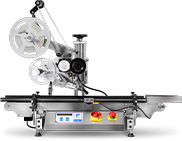
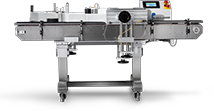
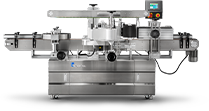
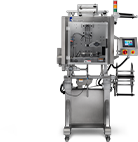
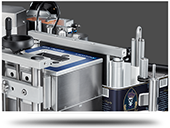
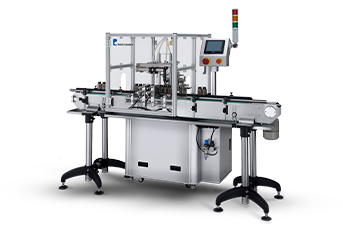
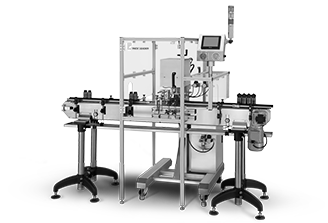
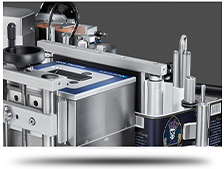





.webp?width=360&name=2x-color-logo%20(1).webp)